The Mongolian past covered up in the beautiful Xinjiang——Bayinbulak Travel Guide
While the Mongolian culture in Inner Mongolia is becoming more and more monotonous, the Bayinbulak Grassland is still full of vitality. The blue sky, clear lake water, green grassland, galloping horses, white flocks, and beautiful girls are simply the paradise in the hearts of Mongolians.
1. Introduction to Bayinbulak
Bayanbulak Grassland is located in Hejing County, Xinjiang. It is in a basin where you can’t see the end at a glance. It is surrounded by snow-capped mountains. It is the second largest alpine pasture after the Ordos Grassland, and it is also the most fertile aquatic grass in the southern foot of the Tianshan Mountains. Xia Ranch, one of the most important animal husbandry bases in Xinjiang. Every midsummer, Bayinbulak ushers in the most beautiful season. Among the thatch, sedge, wormwood, and pine grass, there are many unnamed wild flowers blooming, competing for splendor. Flocks of sheep wander on the grassland like white clouds. Several styles of yurts are located among them. After being rated as a 5A-level scenic spot in 2016, its reputation has gradually become louder, and the number of tourists coming here has increased year by year.
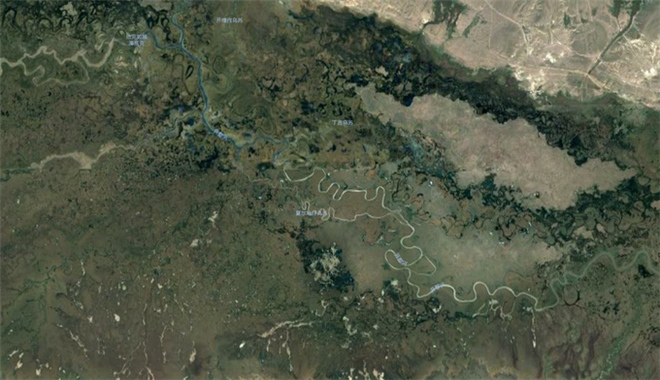
Bayinbuluk grass is located in Hejing County, Xinjiang. It is in a basin where you can’t see the end at a glance. It is surrounded by snow-capped mountains. It is the second largest alpine pasture after the Ordos grassland, and it is also the most fertile aquatic grass in the southern foot of Tianshan Mountains. Xia Ranch, one of the most important animal husbandry bases in Xinjiang. Every midsummer, Bayinbulak ushers in the most beautiful season. Among the thatch, sedge, wormwood, and pine grass, there are many unnamed wild flowers blooming, competing for splendor. Flocks of sheep wander on the grassland like white clouds. Several styles of yurts are located among them. After being rated as a 5A-level scenic spot in 2016, its reputation has gradually become louder, and the number of tourists coming here has increased year by year.
However, judging from the existing guides and travel notes, people’s knowledge of Bayinbulak is still a bit lacking, so I wrote this guide to let you have a deeper understanding of Bayinbulak before departure. There are three main attractions in the Bayinbulak Scenic Area: The first is the world-famous nine bends and eighteen bends, which are basically a must-see for all tourists. The second is Swan Lake. There is the only swan nature reserve in my country in Bayinbulak. The third is the Mongolian folklore represented by the Turghuts returning from the east. That's right, this Turghut is the Turghut who moved thousands of miles from the banks of the Volga River back to the motherland as I learned in history books. Let's explain them in detail below.
2. Nine bends and eighteen bends
Bayinbulak means rich spring water in Mongolian, because the water source here is extremely rich. The water supply of the Bayinbulak Grassland is mainly a mixture of ice and snow melting water and rainfall, and there is also groundwater in some areas, so a large number of swamp grasslands and lakes have been formed. There are 13 springs, 7 lakes and 20 rivers in Bayinbulak Grassland. These different water sources converged to form the Kaidu River. The Kaidu River passes through the middle of the grassland, leaving nine twists and eighteen bends before slipping away in a hurry. Jiuqu Shibawan is the most beautiful section of the Kaidu River and has become synonymous with Bayinbulak. Every year, a large number of tourists come to Bayinbulak to see the wonders of the "nine suns" with nine bends and eighteen bends. Some photography enthusiasts will stay in the scenic spot for many days just to take the best pictures of the nine suns. Eighteen bends.
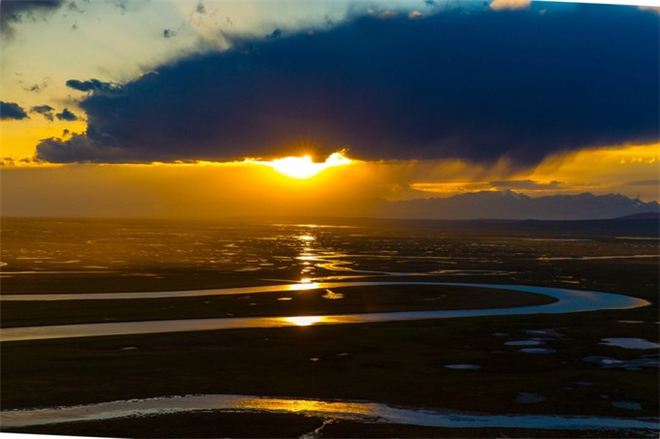
Tips:
1. Bayinbruk entrance fee (including zone bus) is 155 RMB. The last stop of the shuttle bus is Jiuqu 18 Bend Station. There is still a 3KM distance from the station to the best viewing point. You can spend another 20 round trips by battery car, or you can walk or ride a horse back and forth. If you don't have time, I suggest hiking.
2. In fact, there are as many as 1,142 bends in the Kaidu River with a total length of 516 kilometers. From a higher perspective, such as aerial photography or helicopters, You'll probably get countless shots of the sun.
3. Swan Lake
Swan Lake is located in the Zhuletus Intermountain Basin of Bayinbulak Grassland, with an altitude of 2000-2500 meters. It was approved as a national swan nature reserve in 1986. Swan Lake is rich in bird resources, and there are many types and large numbers of waterfowl. According to investigations, there are more than 10,000 whooper swans, cygnets, and mute swans, as well as nearly 10 species of rare birds such as gray geese, bar-headed geese, harriers, terns, eagles, and vultures, which belong to the national first-level and second-level protection animal. Among the four major swans in the country, three of them inhabit here. The number of geese and ducks accounts for one-third of the geese and ducks in my country. Whenever spring comes, the ice and snow melt and everything recovers. Tens of thousands of swans fly over the mountains and mountains from India and southern Africa in groups, and come to Swan Lake to inhabit and multiply. Clouds, cloud shadows, and swans constitute a picture scroll of "a piece of water without traces immersed in the blue sky, and the mountains and waters form their own pictures". The local Mongolian herdsmen regard the swan as a "virgin bird", a "beautiful angel" and a "symbol of auspiciousness". The continuous snow ridges and ice peaks towering into the sky constitute the natural barrier of Swan Lake. Pure spring water, streams and snow water from the Tianshan Mountains flow into the lake. The water is abundant, the grass is luxuriant, the food is plentiful, and the climate is cool and humid, which is very suitable for the growth of birds such as swans.
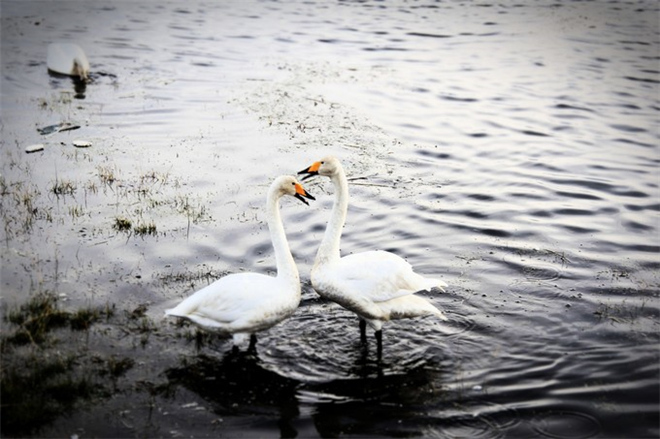
In fact, Swan Lake is not a specific lake, but a large swamp composed of many small lakes connected in series. The Kaidu River flows through the lower part of the center of the basin, and the water surface is scattered into a large area, and the main channel is not obvious. Swans can inhabit here, and springs from all directions converge here, and sometimes they do not necessarily enter the main channel, but form shallow unstable water surfaces near the channel. These water surfaces vary in size and location depending on the season and year. Changes, but these places belong to Swan Lake. However, in order to give tourists a viewing point, the scenic spot chose a lake among the many lakes in Bayinbulak, named it "Swan Lake", and built a watchtower on the high ground by the lake for tourists to watch the living habits of swans. .

Tips:
1. Many tourists have a general feeling about Swan Lake. The reason is that the number of swans in the "Swan Lake" as a scenic spot is limited, and there is no picture of flocks of swans playing on the lake as imagined. It is normal that there are too many human activities and few swans near "Swan Lake", but it does not mean that Bayinbulak Swan Lake is fake. After all, Swan Lake is a nature reserve established for the better reproduction and survival of swans. It is also reasonable to minimize human activities in scenic spots, please understand.
2. There are many and big mosquitoes near Swan Lake. If you are bitten, you will definitely have a big bag at a time. Be careful not to expose your skin.
4. The Mongolian Folklore of Torghut
Bayinbulak has been a famous grassland in history. This grassland once gave birth to ancient nations such as Huns and Turks. Since Genghis Khan's Western Expedition in the 13th century, this place has been the pasture of many Mongolian tribes. The main residents living here are the Mongolian Turghuts who returned to the east. Today, the total Mongolian population in Xinjiang is only over 100,000, and most of them are descendants of the Turghut tribe who returned from the east. They, like the vast majority of Xinjiang people, are working hard to protect the frontier. The return of Turhut to the east is a very dazzling page in the history of Chinese national unity. When you go to Bayinbulak, if you understand this period of history, I believe it will make your journey more interesting. Let me briefly summarize this history for you.

The Turghuts are an ancient Mongolian tribe, who used to be nomadic in Tarbahatai (today's Tacheng, Xinjiang). At the end of the Ming Dynasty, because of the rise of Zhungeer (the one that was later destroyed by Emperor Qianlong) and the discord among the Mongolian tribes, the leader of the Torghut led the entire headquarters and a small number of people from other tribes to migrate to the banks of the Volga River and established the A Turghut Khanate.
It didn't take long to live a stable life, and Turghut was oppressed by the Tsarist Empire. Tsarist Russia made Turghut surrender, let the Cossacks (not Kazakhs, they have little to do with each other) erode the land of Turghut, and recruited a large number of soldiers from the Turghut to work for Tsarist Russia to fight against known country. In the era of hot weapons, the Turghuts did not have the advantage of the era of cold weapons, and a large number of Turghuts died in battle. At that time, some Turghuts said, "If the fight continues like this, the Turghuts will be gone." Coincidentally, at this time the Zhungeer tribe had been pacified by Qianlong, so Ubaxi, the leader of the Turghut at that time, decided to lead his tribe back east, "go to the east, to the place where the sun rises".

The plan of Turghut’s return to the east was acquired by Tsarist Russia. For Tsarist Russia, Turghut was a very good source of soldiers. Coupled with taxes, Tsarist Russia was unwilling to let the Turghut go back. This had to make Worbashi decide to act in advance. He originally planned to take more than 10,000 compatriots from the left bank of the Volga River back together. Unexpectedly, it was a warm winter and the river did not freeze. People on the left bank cannot cross the river. Obashi had no choice but to make an impromptu decision, and the 33,000 households on the right bank acted immediately. The Turghuts on the left bank who failed to return to the east are still in Russia and are called Kalmyks. They established a Kalmyk Republic and became one of the subjects of today's Russian Federation.
The journey back to the east was extremely difficult, and it was called "the last large-scale migration in human history". When Turhut set off, there were about 170,000 people in total. They were constantly besieged and pursued by Tsarist Russia and the Cossacks along the way. In addition to the long distance and harsh environment, when they returned to China, there were only about 80,000 people left, and more than half of them were lost. At that time, some Turghut people also said: "Is the water in the Volga River salty? Is the water in the Ili River sweet? Is it because we lost so many relatives to wear flower feathers?" It can be seen that Ubaxi received pressure. Although Ubashi was young, he had a clear view of the situation of the Torghut tribe at that time. When he died, he left such last words: plowing the fields and grazing, living in peace, and avoiding troubles.

After Turhut returned to the east, the Qing government resettled them in various parts of Xinjiang. Today, the two Mongolian autonomous prefectures in Xinjiang—Bayingoleng Mongolian Autonomous Prefecture and Bortala Mongolian Autonomous Prefecture were established for them and their descendants. , and the direct subordinates of Wubasi are located in today's Bayinbulak. The geographical environment of Bayinbulak is relatively closed, but it accidentally preserves the traditional Mongolian culture. The ancient way of life on the Bayinbulak grassland today may be the pursuit of the Turghuts back then, otherwise why those Mongolians who have bid farewell to nomadic life would cry in the Bayinbulak grassland.
Many people think that only when they go to Inner Mongolia can they experience the Mongolian culture. As everyone knows, the purest place is in Xinjiang. At present, the local government is also vigorously developing Mongolian-related folk customs. The Naadam Conference is held in mid-to-late July every year, and events such as horse racing, equestrianism, and archery make tourists linger and forget to return.
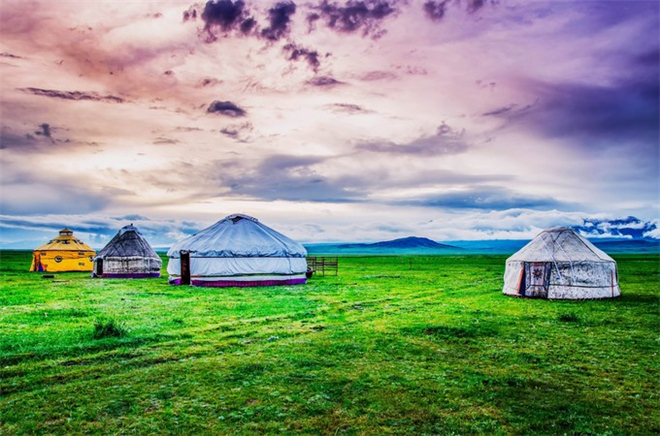
In addition, a Torghut Folk Culture Village has also been established in Bayinbulak Town, where there are yurt-style B&Bs for tourists to stay in. During the peak season, Xinjiang's first large-scale live-action drama "Eastern Return·Impression" is performed here. "Return to the East·Impression" is divided into two parts. The first part of the performance is "Going Home" as the theme, which restores the process of returning to the motherland led by Ubashi in 1771. At sunset, black wolf smoke enveloped the grassland. Knights rode war horses, carriages pulled luggage, and herdsmen drove sheep and pushed carts. They overcame unimaginable hardships and endured great national sacrifices. Complete the journey home with wisdom.
The second part "The Hometown of Torghut", in the performing arts hall of "Turghut Folk Culture Village" that can accommodate 600 people, with Mongolian songs and dances such as Tuobusuer, Sawuerdeng, Jianger, etc. It shows the scene of Turhut descendants living and working in peace and contentment and their vision for a happy life in the future.
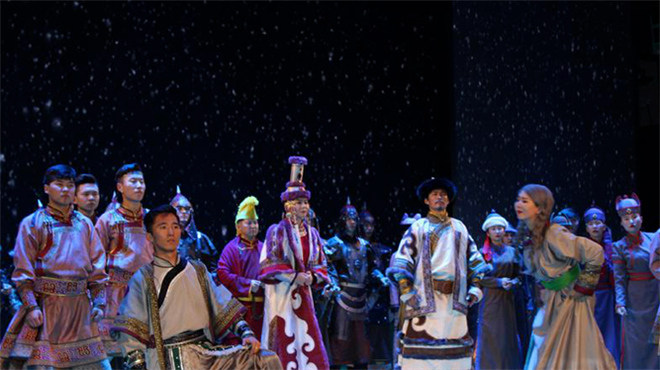
Tips:
1. Impressions of returning to the east twice a day, the first one is at 13:00 noon, a stage play. The second is at 22:30 in the evening, a live-action drama performance. Prices range from 168 to 478 depending on the seat or package. The off-season performance time will be adjusted appropriately according to the season. Please pay attention to this guide and update it at any time.
2. The accommodation in the folk village has different room types, including standard rooms, large tent rooms with 2 standard rooms, and villas for a family of 6 people. Generally, it is very tense in the peak season, and it needs to be booked at least one week in advance.
5. Barunkure
In addition, on the way from Swan Lake to Nine Bends and Eighteen Bends, there is a scenic spot called Barun Kure. Kure means "temple". There is a mountain in the middle of the Bayinbulak Grassland called Mount Albin. Therefore, Barunkure is also called the Albin Lama Temple. The Turghuts, like the Manchus, believe in Tibetan Buddhism and regard lama temples as spiritual sustenance and holy places for audience. Barunkure used to be a "moving temple", that is, the temple was placed on a moving carriage for the Turghuts to worship at any time during their migration/transition. "Moving temples" are an important way for the Turghuts to continue and maintain their religious beliefs. It is even said that the devoutness of the Turghuts is one of the factors that prompted the Turghuts to return. Barunkure was pushed to come to Bayinbulak with the army returning from the east, and experienced the suffering experienced by the Turghut tribe and the prosperity today. Now that the temple is fixed, it has become the Albin Lama Temple today. The Lama Temple is not particularly large, but it is solemn and solemn, and the decoration is similar to that of the Lama Temple in Tibetan areas, very delicate. The temple can be visited for free, and tourists can go in to worship Buddha and make a wish when they come here.
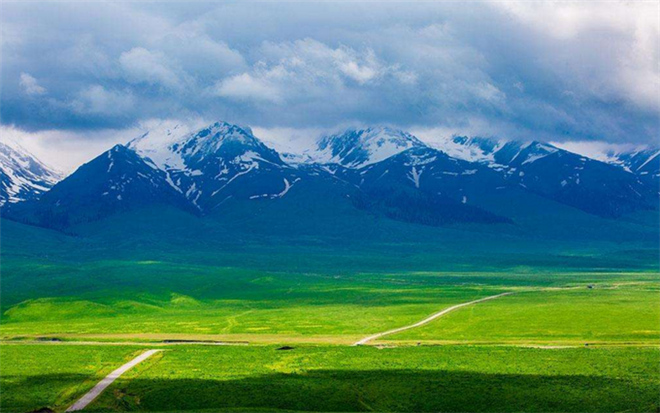
6. Classic itinerary of Bayinbulak
The Bayanbulak Scenic Spot itself is very large, but there are only three conventional scenic spots currently being developed (Swan Lake, Barun Hot and Nine-Takes and Eighteen-Curves in turn). It's all over. After leaving the scenic spot, you can live in the Turghute Folk Village and see the impression of Donggui. The whole itinerary can take half a day to a day.
If you want to experience it in depth, after visiting the Bayinbulak Grassland, there are also the summer resort Gongnais Forest Park and the Arsha Hot Spring Scenic Spot, which can be cured and recuperated, 90 kilometers away. In addition, Bayanbulak can drive 1.5 hours north to Nalati Scenic Area, and drive south to the Duku Highway for more than 230 kilometers to cross the Tianshan Mountains to Kuqa.
Transportation: Since Bayinbulak is in the middle of the Tianshan Mountains, its geographical location is relatively remote. Although it can lead to other scenic spots in all directions, it is not particularly convenient to go anywhere. If you want to save money, you can carpool between scenic spots, such as in Bayinbulak carpools to Nalati, Korla or Kuqa. Or you can charter a car and travel freely from the start, and you can stop as you go, wherever you go.
Accommodation: In addition to staying in Torghut Folk Village, there are many hotels in Bayinbulak Town, all of which are of various grades. Prices vary a lot during low and peak seasons. It is recommended to make reservations in advance when going to Bayinbulak during peak seasons. Otherwise, if you book on site, the store will just ask you for a price.
Dining: There are also a large number of restaurants in Bayinbulak Town, with various styles. But the peak season will not be cheap. After all, the peak season only lasts for a few months, and no one is willing to operate it unless it makes enough money in a short period of time.
In addition, if you encounter rainy weather in Bayinbulak, don’t worry if you can’t see the nine bends and eighteen bends. You can change the way of entertainment and pick mushrooms on the grassland. The wild mushrooms in Bayinbulak are very famous, and the dishes related to wild mushrooms in the town are also relatively expensive. It doesn't cost much to pick some free mushrooms on the grassland and come back to a certain restaurant for the chef to process them. There are many kinds of wild mushrooms, let the store help you identify them, and don’t eat those that cannot be eaten casually.
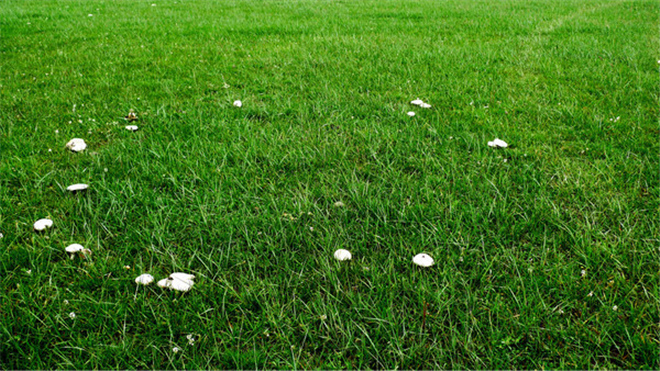
Written in the last words: Bayinbulak not only has invincible grassland scenery, but also has a profound national history. I hope this guide can make your journey more exciting.



 Address: Hejing County, Bayingolin Mongolian Autonomous Prefecture, Xinjiang Uygur Autonomous Region Copyright: Bayinbuluke Scenic Area Management Committee, Hejing County
Address: Hejing County, Bayingolin Mongolian Autonomous Prefecture, Xinjiang Uygur Autonomous Region Copyright: Bayinbuluke Scenic Area Management Committee, Hejing County 

